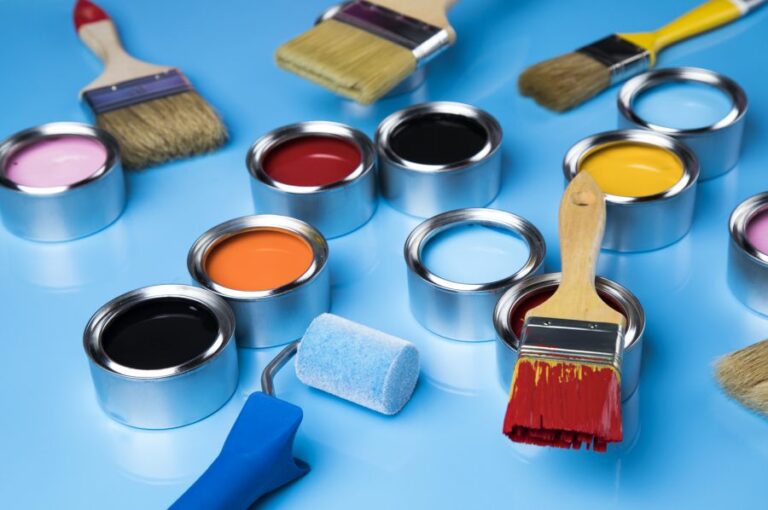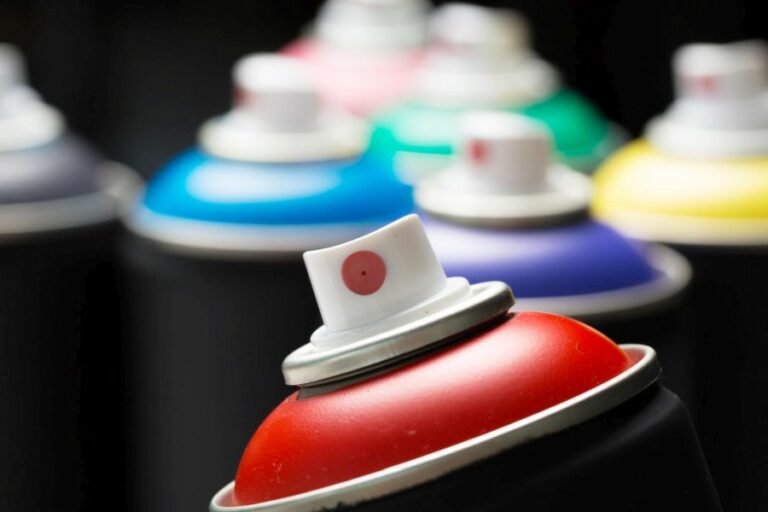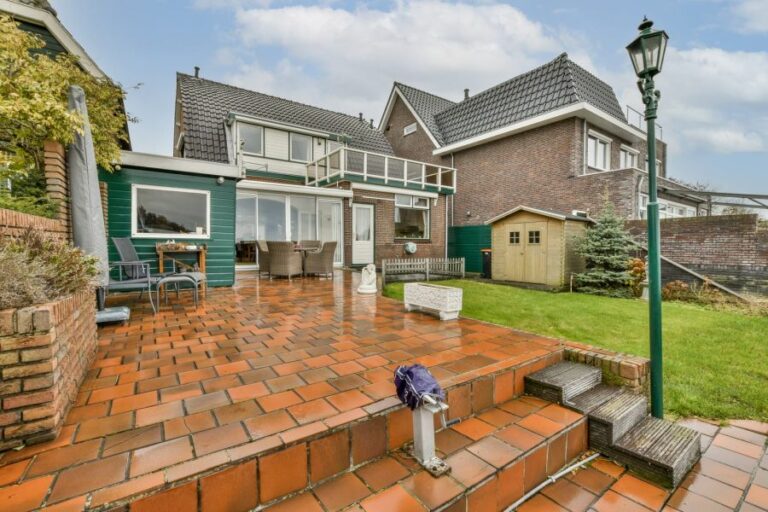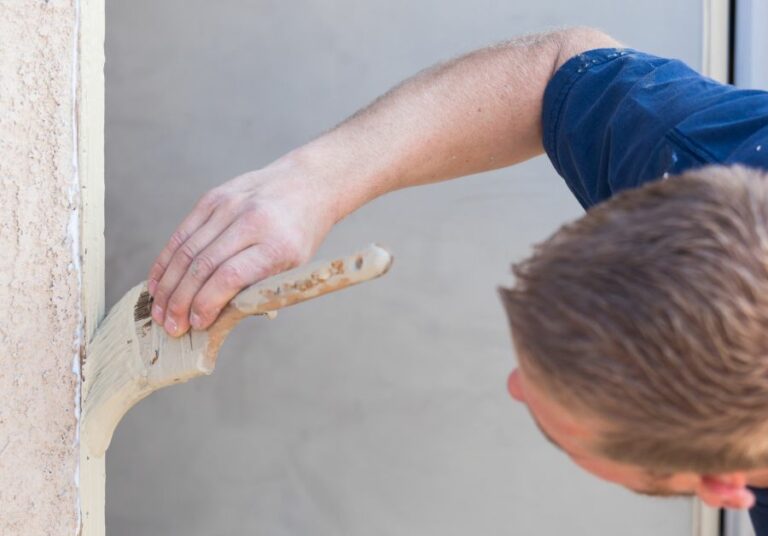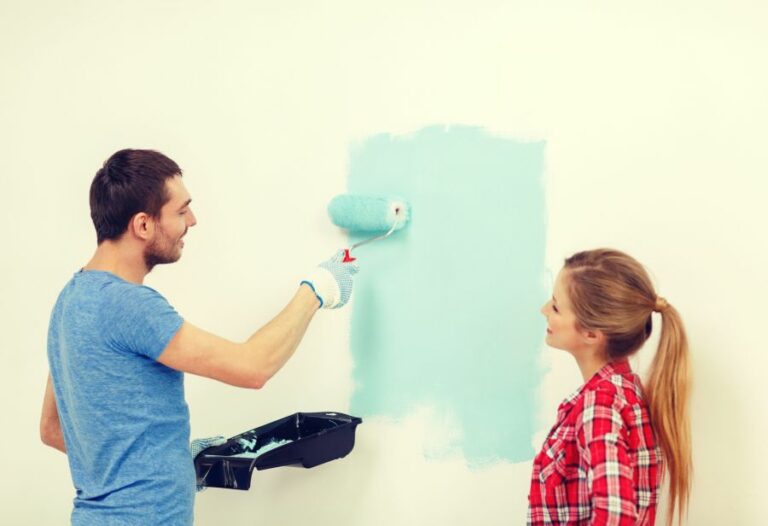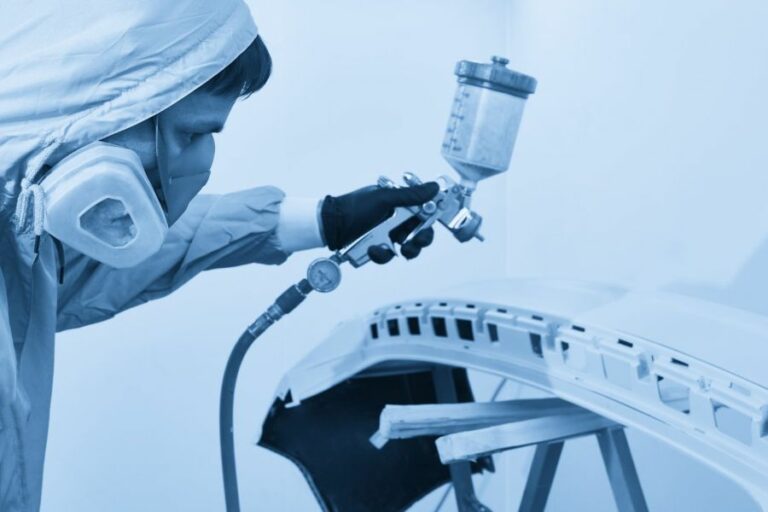Protect Your Wood with Waterproof Outdoor Paint: what pros say
Are you tired of your wooden outdoor furniture losing its charm and color to harsh elements? Rain, snow, or intense sunlight can easily take a toll on wood, making it age faster than expected. Fret not; our comprehensive guide in this blog post, ‘waterproof outdoor paint for wood,’ is here to save the day! Discover how easy it is to protect and enhance the beauty of your wood surfaces by choosing the perfect waterproof paint.
Waterproof outdoor paint for wood:
Waterproof outdoor paint is crucial for preserving wood structures exposed to the elements. Various types of paint, including acrylic latex, alkyd oil-based, solid stain, and marine paint, offer different levels of protection and durability.
Proper preparation, application, and maintenance are essential for a successful, long-lasting waterproof finish. Selecting the right waterproof paint depends on factors like wood type, intended use, and desired appearance, so consult product information and seek recommendations for the best results.

Discover the ideal waterproof outdoor paint to protect and enhance your wooden surfaces. From top brands to must-know application tips, our comprehensive guide has you covered. Uncover the lasting beauty of your decks, fences, and furniture. Dive in!
Contents
- 1 Premium Waterproof Exterior Paint for Wooden Surfaces
- 2 Determining the Most Effective Waterproof Paint for Wooden Surfaces
- 3 What is the process for painting wood to provide weatherproof protection?
- 4 What is the Most Long-Lasting and Durable Exterior Paint for Wood Surfaces?
- 5 What is the Most Effective Paint for Sealing Exterior Wooden Surfaces?
Premium Waterproof Exterior Paint for Wooden Surfaces
• Introduction to Waterproof Outdoor Paint
Waterproof outdoor paint is essential to maintaining and preserving wood structures constantly exposed to the elements. Whether it’s a deck, fence, siding, or outdoor furniture, quality waterproof paint can significantly extend the life of your wood structures, protecting them from water damage, decay, and other environmental factors.
I will discuss the best types of waterproof paint, the steps to prepare and apply the paint, and important considerations for selecting the right product.
• Types of Waterproof Outdoor Paint for Wood
Several types of waterproof paint are suitable for outdoor wood applications, offering varying levels of protection, durability, and aesthetics. Some popular options include:
– Acrylic Latex Paint
Acrylic latex paint is a water-based option that provides excellent adhesion, flexibility, and resistance to ultraviolet (UV) exposure. It is easy to apply, dries quickly, and cleans up easily with soap and water.
Acrylic latex paint suits various exterior wood surfaces, including siding, decks, and fences. Its elasticity allows it to expand and contract with the wood, preventing cracking and peeling while maintaining a durable finish.
– Alkyd Oil-Based Paint
Alkyd oil-based paint is known for its durability, making it a popular choice for heavily-trafficked areas and furniture. It provides a high-gloss, hard finish that resists wear, chipping, and water penetration. It is more difficult to clean up than latex options, requiring paint thinner or mineral spirits.
One downside to alkyd paint is that it tends to yellow and become brittle over time, especially in areas not exposed to sunlight.
– Solid Stain
A solid stain is another option that offers the appearance of paint with the penetrating benefits of a stain. It provides a rich, opaque finish that covers the wood grain completely, allowing some texture to show through.
Solid stains offer excellent UV protection and water resistance, although paints in high-traffic areas may be less durable than they are. They are often recommended for weathered wood or surfaces with many imperfections because they can help homogenize the appearance visually.
– Marine Paint
Specifically formulated for marine environments, marine paint is a heavy-duty option that provides outstanding water resistance and durability for wood surfaces subjected to harsh weather conditions and constant humidity.
Commonly used on boats, marine paint is also suitable for coastal homes or structures located near bodies of water where a waterproof finish is essential.
• Preparing Wood Surfaces for Waterproof Paint
Preparing the wood surface is critical in ensuring a successful outcome when applying waterproof paint. Proper preparation will ensure proper adhesion and prevent peeling, bubbling, or other issues. The essential steps include the following:
- Cleaning: Remove any dirt, mildew, or debris from the wood surface using a mixture of water and mild detergent. A scrub brush or pressure washer may be used for heavily soiled areas. Allow the wood to dry thoroughly before proceeding.
- Sanding: Sand the wood surface to remove any loose paint, stain, or finish. Start with coarse-grit sandpaper (e.g., 80-grit) and move to finer-grit (e.g., 120-grit) for a smooth, uniform surface. Be sure to sand with the wood grain to avoid scratches.
- Priming: Applying a primer is essential for ensuring proper paint adhesion and preventing issues with tannin bleeds or knots in the wood. Use a high-quality exterior wood primer compatible with your chosen paint or stain.
- Filling Gaps: Fill any cracks or holes in the wood with wood filler or paintable caulk. Allow the filler or caulk to dry according to the manufacturer’s instructions, then sand it until smooth.
• Applying Waterproof Paint to Wood
Once the wood surface is prepared, it’s time to apply your waterproof paint. Follow these general steps to ensure a long-lasting, weather-resistant finish:
- Stir the Paint: Stir the paint thoroughly to ensure an even distribution of pigments, resins, and other ingredients.
- Paint Application: Use a paintbrush, roller, or sprayer to apply the paint to the wood surface. Follow the manufacturer’s recommendations for best results, including the appropriate wet film thickness, % of paint dilution, and the number of coats.
- Drying Time: Allow ample drying time between coats, typically 24 hours, or as the manufacturer directs. Avoid painting in humid, wet, or extreme temperature conditions.
- Maintenance: To extend the life of your waterproof finish, it’s important to inspect and maintain it regularly. This may involve cleaning, spot touch-ups, or recoating as needed.
• Choosing the Right Waterproof Paint for Your Wood Project
The key to selecting the right waterproof paint for your outdoor wood project is understanding your specific needs and the unique features of each product. Consider factors such as the type of wood, the intended use, and the desired appearance.
Always consult the manufacturer’s product information, read reviews, or solicit recommendations from friends, contractors, or paint specialists. Investing in a high-quality, waterproof paint appropriate for your specific application will ensure maximum protection, performance, and satisfaction with your finished project.
Determining the Most Effective Waterproof Paint for Wooden Surfaces
As an experienced professional in painting and waterproofing, I have seen many products and techniques come and go. Over the years, I have learned which ones truly work and which temporarily mask the issue.
I will share the best paint for waterproofing wood to ensure your wooden structures and surfaces look great and remain protected for years.
• Why Waterproofing Wood is Important
Wooden surfaces, be they outdoor furniture, fences, or the exterior of your home, are constantly exposed to the elements. This exposure can lead to various issues, such as rot, decay, and pesky insect infestations. Waterproofing your wood is essential in preserving its beauty and ensuring its longevity.
In this guide, I will cover different types of waterproofing paints, their specific benefits, and when to use each, along with some helpful tips and tricks.
• The Top Choices for Waterproof Wood Paint
When it comes to waterproofing wood, there are several paint options. These are my top recommendations for ensuring a long-lasting and beautiful finish:
– Acrylic Latex Paint
Acrylic latex paint is popular, as it offers many benefits for waterproofing wooden surfaces. This type of paint is highly durable, easy to clean, and resistant to fading or yellowing over time. Additionally, it is quick-drying and can be applied both indoors and outdoors.
I recommend using acrylic latex paint in a semi-gloss or high-gloss finish to fully benefit from its waterproofing properties. Glossier finishes help repel water and other liquids more effectively, protecting the underlying wood surface.
– Elastomeric Paint
Elastomeric paint is another fantastic option when waterproofing wood. This type of paint is highly flexible and can expand and contract with the natural movement of the wooden surface. This quality helps prevent cracking and peeling, making it an ideal choice for areas exposed to extreme temperature fluctuations.
Elastomeric paint also creates a thick, waterproof barrier that effectively seals out moisture, ensuring your wooden surfaces remain protected in any weather.
– Oil-Based Paint
Oil-based paints have long been favored for their durability and rich, lustrous finish. While they may be slightly more challenging to apply and clean up than water-based alternatives, they can provide exceptional waterproofing properties for your wooden surfaces.
When using oil-based paint for waterproofing, choosing a high-quality product designed for exterior use is essential. This will ensure the paint is formulated to withstand the elements effectively.
• Considerations When Choosing Waterproofing Paint
Before you head out to purchase your waterproofing paint, there are a few essential factors to consider:
– Surface Preparation
Proper surface preparation is the key to a successful waterproofing job. Ensure the wood is clean, dry, and free from any loose dirt, debris, or existing paint. You may need to sand the surface to remove imperfections and create a smooth, even finish for better paint adhesion.
– Primer
Using a primer on your wooden surfaces before applying your chosen waterproofing paint will further enhance the paint’s adhesion and provide additional layers of protection. Look for a high-quality exterior primer specifically designed for use on wood.
– Maintenance and Recoating
Remember that regular maintenance and recoating may be necessary to ensure continued waterproofing protection, depending on the type of paint you choose and the exposure of your wooden surfaces.
Follow the manufacturer’s recommendations regarding maintenance and recoating to ensure optimal performance and longevity.
• Tips for a Successful Waterproofing Job
To achieve the best possible results when waterproofing your wood, follow these expert tips:
- Always choose high-quality brushes, rollers, or sprayers designed for your chosen paint type. This will ensure a smooth, even application and minimize brushstrokes or roller marks.
- Apply multiple thin coats of paint, allowing each coat to dry fully before applying the next one. This will provide better waterproofing protection and result in a smoother, more attractive finish.
- Pay close attention to the edges and corners of the wood, as these areas are often more susceptible to moisture infiltration. Be sure to apply enough paint to cover these areas thoroughly.
- When painting in humid or damp conditions, allow additional time for each coat to dry before recoating. Moisture in the air can prolong drying times, potentially resulting in a less effective waterproofing barrier.
- Always follow the manufacturer’s instructions regarding application techniques, drying times, and the number of coats needed for optimal waterproofing performance.
• Conclusion
Waterproofing your wooden surfaces is vital in preserving their beauty and longevity. By choosing the best paint for the job and following the expert tips and recommendations outlined in this guide, you can rest assured that your wood will remain protected from the elements and look great for years.
Enjoy the accomplishment and satisfaction of successfully waterproofing your wood and showcasing its true beauty.
Paint Type | Advantages | Disadvantages |
|---|---|---|
Water-Based Paint | – Low VOCs – Easy cleanup – Fast drying – Low odor | – Less durable – May need multiple coats – Weak waterproofing |
Oil-Based Paint | – Excellent durability – Rich colors – Strong waterproofing | – High VOCs – Difficult cleanup – Long drying time – Strong odor |
Acrylic Latex Paint | – Good durability – Low VOCs – Easy cleanup – Good waterproofing | – Not as durable as oil-based paint – May need multiple coats |
What is the process for painting wood to provide weatherproof protection?
Weatherproofing wood surfaces is essential to protect them from the effects of moisture, sunlight, and temperature fluctuations over time. While several methods are available, painting is one of the most effective and cost-efficient techniques for achieving lasting weatherproof protection.
I will provide expert advice to successfully paint your wood surfaces and ensure they are well-protected, durable, and visually appealing.
• Selecting The Right Paint For Weatherproofing
To achieve the best weatherproofing results, selecting the appropriate paint is crucial. There are different types of paint, and their specific qualities will determine how effectively they protect the wood from the elements.
– Exterior Acrylic Latex Paint
Exterior acrylic latex paint is a widely recommended option for weatherproofing wood. It adheres well to wood surfaces, provides excellent UV resistance, has low VOCs (volatile organic compounds), and is easy to clean up with soap and water.
Acrylic latex paint can also flex as the wood expands and contracts, helping prevent the formation of cracks in the paint film.
– Oil-Based Paints
Oil-based paints, also known as alkyd paints, offer high durability and superior adhesion to wood surfaces. They take longer to dry than acrylic latex paints but create a hard, smooth finish that can withstand harsh weather conditions.
However, oil-based paints may not provide the same UV protection as acrylic latex paint and can become brittle over time, potentially leading to cracking or peeling.
• Preparing The Wood Surface For Painting
Properly preparing the wood surface ensures the paint adheres properly and provides lasting protection. Here are the necessary steps to take before applying paint to the wood.
– Clean The Surface
Start by cleaning the wood surface to remove dirt, dust, and mildew. Use a stiff brush and mild detergent mixed with water to scrub the surface gently. Rinse off the detergent with clean water and let the wood dry completely before proceeding.
– Sand The Surface
Rough or uneven wood surfaces may require sanding to create a smooth surface for painting. Use medium-grit sandpaper (around 80-120 grit) and sand the surface toward the wood grain. After sanding, use a tack cloth or a damp sponge to remove any sanding dust.
– Repair Any Damage
Inspect the wood for any damage, such as holes or cracks, and repair them with wood filler or epoxy. Follow the manufacturer’s instructions for the application and drying times. Once the filler is dry, sand the repaired area to make it smooth and even with the rest of the surface.
– Apply Primer
Applying a primer is essential, as it helps the paint adhere better to the wood surface and provides additional protection against moisture, mold, and mildew. Choose a primer compatible with the paint you selected, and apply one or two coats, allowing each coat to dry as per the manufacturer’s recommendations.
• Painting The Wood Surface
Now that the wood surface is adequately prepared, it is time to apply the paint. Following the correct technique will help achieve a smooth and durable finish.
– Mix The Paint
Stir the paint thoroughly before starting to ensure the pigments and additives are evenly distributed. If you’re using multiple gallons of paint, consider mixing them in a larger container to maintain color consistency across the entire surface.
– Use Quality Brushes And Rollers
Investing in high-quality brushes and rollers is essential for achieving a smooth and professional finish. Choose brushes with synthetic bristles for acrylic latex paint and natural bristle brushes for oil-based paints.
– Apply Paint In Thin Coats
Applying paint in thin coats helps it dry uniformly and adhere effectively. Follow the manufacturer’s instructions for drying times between coats. Generally, two to three coats are sufficient for proper coverage and protection.
Still, additional coats may be necessary for wood species with high tannin content or in areas with extreme weather conditions.
– Allow Adequate Drying Time
After the final coat of paint, allow the wood surface to dry completely before exposing it to the elements or using it. The drying time varies depending on the paint type, wood species, and environmental conditions at the time of application.
• Regular Maintenance For Continued Protection
Regular inspection and maintenance are crucial to maintaining the weatherproof qualities of the painted wood surface. Clean the surface with a mild detergent and water to remove dirt and debris, and touch up any areas that show signs of wear or damage.
Following this expert guide, you can successfully paint wood surfaces and provide lasting weatherproof protection, ensuring the wood remains in good condition. It retains its aesthetic appeal for years to come.
Step | Description |
|---|---|
1 | Choose a high-quality exterior paint designed for wood surfaces, and ensure it has weatherproofing properties such as resistance to water, UV rays, and mildew. |
2 | Allow the wood to dry completely before proceeding with the painting process. |
3 | Apply a coat of primer specifically designed for exterior wood surfaces to provide a base for the paint to adhere to and for better protection against weathering. |
4 | Allow the primer to dry completely as per the instructions on the product label. |
5 | Allow the primer to dry completely per the instructions on the product label. |
6 | Apply the first coat of paint, ensuring even coverage and smooth brush strokes. |
7 | Allow the paint to dry as per the instructions on the product label. |
8 | Apply a second coat of paint for added durability and protection against weathering. |
9 | Allow the final coat of paint to dry completely, and enjoy your newly weatherproofed wood surface. |
What is the Most Long-Lasting and Durable Exterior Paint for Wood Surfaces?
When protecting and preserving the beauty of wooden surfaces around our homes, one of our biggest challenges is choosing the right exterior paint. A high-quality paint will not only keep your wooden surfaces resistant to the elements but will also maintain the elegance of your home for years to come.
I will discuss the most durable exterior paint for wood and provide a comprehensive guide on selecting the best one for your needs.
• Understanding Paint Durability
In the context of exterior paint, durability refers to its ability to resist wear and tear and protect the underlying surface from damage due to exposure to weather elements.
Durable exterior paint forms a long-lasting protective barrier against moisture, sun exposure, temperature fluctuations, and other factors that could compromise wooden materials’ structural integrity and appearance.
• Key Factors to Consider When Choosing Exterior Paint for Wood
Before diving into specific product recommendations, it’s crucial to understand the key factors determining the durability and overall performance of exterior paint for wood.
These factors will guide you in selecting a paint product that will last the test of time and provide maximum protection for your wooden surfaces.
– Acrylic or Oil-based Paints
Two main types of exterior paint are available on the market: water-based (acrylic) and oil-based (alkyd) paints. Both have their unique advantages and drawbacks.
Acrylic Paints
- High durability and resistance to peeling, cracking, and fading
- Faster drying times
- Easier to clean up with water
- Lower in volatile organic compounds (VOCs), which are harmful chemicals released during the drying process
- Generally more environmentally friendly
Oil-based Paints
- They are known for their ability to penetrate deeper into the wood surface, providing a stronger bond and long-lasting protection
- Typically impart a smoother finish
- Better at resisting the effects of wear and tear
- The smell of oil-based paints can be quite strong and may linger even after the paint has dried
From a durability standpoint, acrylic paints are a better choice for exterior applications due to their resistance to environmental factors and ease of maintenance.
– Paint Quality
High-quality paint typically contains more expensive, premium ingredients that provide better adhesion, longer-lasting protection, and a more consistent, appealing finish. Investing in high-quality exterior paint for wood is essential to ensure maximum durability and resistance against wear and tear.
– Climate Considerations
The local climate plays a significant role in determining the most durable exterior paint for wood. If your home is in a sunny and hot region, consider using paint with UV protection. If you live in a wet or humid area, look for paint products resistant to mold, mildew, and water damage.
• Recommended Durable Exterior Paints for Wood
Based on the factors discussed above, the following are some top-rated exterior paint options for wood that offer excellent durability and protection:
1. Behr Premium Plus Exterior Paint & Primer in One
This superior-quality paint from Behr is an acrylic product designed to provide exceptional adhesion, durability, and a beautiful finish. The added advantage of built-in primer simplifies the painting process while ensuring long-lasting color retention and resistance to cracking, peeling, and fading.
2. Benjamin Moore Aura Exterior Paint
Benjamin Moore’s Aura line is well-known for its outstanding durability and ability to withstand harsh weather conditions. This low-VOC, 100% acrylic product provides exceptional color retention and a smooth, uniform finish on wooden surfaces.
Its superior resistance against fading, cracking, and blistering makes it an excellent choice for homeowners who desire long-lasting beauty and protection.
3. Sherwin-Williams Duration Exterior Acrylic Coating
The Sherwin-Williams Duration Exterior line provides superior UV resistance and protection against moisture damage and includes advanced features designed to improve application and reduce maintenance needs.
This self-priming acrylic paint eliminates the need for a separate primer and offers outstanding coverage with fewer coats. It’s resistant to peeling, cracking, and blistering, making it a great choice for long-lasting protection.
• Final Thoughts
In conclusion, wood’s most durable exterior paint is typically an acrylic product with high-quality ingredients and advanced features designed to provide maximum protection against the elements. Investing in premium paint like Behr Premium Plus, Benjamin Moore Aura, or Sherwin-Williams Duration will ensure the longevity and beauty of your home’s wooden surfaces for years.
Remember to consider your local climate and specific needs when selecting the right exterior paint to guarantee optimal performance and desired results.
What is the Most Effective Paint for Sealing Exterior Wooden Surfaces?
Exterior wood surfaces require protection from the elements to maintain their natural beauty and structural integrity. The right paint can effectively seal and protect these surfaces, prolonging the life span of your wooden structures and providing an attractive appearance.
I will discuss the different types of paint for sealing exterior wood, their advantages and disadvantages, and how to choose the best one for your project.
• Top Choices for Exterior Wood Paint
Several types of paint are suitable for sealing exterior wood surfaces. I will discuss the three most popular ones: acrylic latex paint, oil-based paint, and solid color stain.
– Acrylic Latex Paint
Acrylic latex paint is a water-based paint highly recommended for sealing exterior wood due to its excellent adhesion, durability, and ease of use. Here are some benefits of using acrylic latex paint:
- Ease of Application: Acrylic latex paint can be easily applied with a brush, roller, or spray can, making it suitable for various exterior projects, such as fences, decks, and siding.
- Weather Resistance: This type of paint forms a flexible and breathable film that can withstand different weather conditions, including rain, snow, and sunlight.
- Quick Drying Time: Acrylic latex paint dries quickly, usually in a couple of hours, allowing you to apply multiple coats quickly.
However, there are some drawbacks to using acrylic latex paint on exterior wood surfaces. It may not provide the best protection against moisture ingress, leading to potential rot or mold issues if the surface is not properly prepared or maintained.
– Oil-Based Paint
Oil-based paint is another option for sealing exterior wood surfaces. It has a higher level of solids than acrylic latex paint, which results in a thicker, more durable protective coating. Here are some advantages of using oil-based paint:
- Superior Adhesion: Oil-based paints generally have better adhesion to exterior wood surfaces, which enhances their protective abilities.
- Long-Lasting Finish: The thick, durable finish provided by oil-based paint can last many years with proper application and maintenance.
On the downside, oil-based paints can be more challenging to work with as they require solvents for cleanup and have a slower drying time. They may also emit strong odors during application and tend to yellow over time, which can affect the aesthetics of your project.
– Solid Color Stain
Solid color stain is a hybrid product that combines the advantages of both paint and stain, providing a durable finish with the penetrating properties of a stain. Here are some benefits of using solid color stain on exterior wood surfaces:
- Highly Effective Protection: Solid color stains offer excellent protection against weathering, UV damage, and moisture intrusion, ensuring the longevity of your exterior wood structures.
- Even Color Distribution: Unlike traditional stains, solid color stains provide a uniform, paint-like finish that can hide imperfections and create a consistent appearance on the wood surface.
- Easy Application: Like acrylic latex paint, solid color stains can be applied with a brush, roller, or sprayer and are relatively easy to use.
The main drawback of solid color stains is that they tend to be less durable than acrylic latex and oil-based paints, requiring more frequent maintenance and reapplication.
• Factors to Consider When Choosing the Best Paint for Exterior Wood
To select the best paint for your exterior wood project, consider the following factors:
- Durability: Choose the paint with high durability to ensure your finished project can withstand weathering and wear over time.
- Ease of Application: Opt for a paint that is easy to apply, with a straightforward cleanup process to make your project go more smoothly.
- Aesthetic Appeal: Consider the desired appearance of your finished project, and choose a paint that aligns with your preferences and complements other exterior elements.
- Environmental Impact: Evaluate the environmental impact of the paint you choose, considering factors such as VOC levels and biodegradability.
• Final Thoughts
In summary, acrylic latex paint, oil-based paint, and solid color stain are all viable options for sealing exterior wood surfaces. Acrylic latex paint is an excellent choice for ease of use, weather resistance, and quick drying time. Oil-based paint offers superior adhesion and a long-lasting finish, while solid color stain provides a hybrid solution that combines the benefits of both paint and stain.
When choosing the best paint for your exterior wood project, consider factors such as durability, ease of application, aesthetic appeal, and environmental impact. Properly selecting and applying high-quality paint can help protect and enhance the beauty of your exterior wood surfaces for many years.
Type of Paint | Description | Benefits |
|---|---|---|
Acrylic Latex Paint | Water-based paint made with synthetic polymers. | Low VOCs, easy clean up, long-lasting, flexible, and resistant to mildew and moisture. |
Oil-based Paint | Paint made with oil, such as linseed oil or alkyd. | Durable, long-lasting, and penetrates the wood grain for a solid seal. |
Exterior Stain | A combination of colorant and binder that soaks into the wood surface. | Seals and protects the wood while allowing the texture and grain to show. |
Marine Paint | Specialized paint designed for marine environments. | Highly resistant to water, moisture, and UV exposure, providing excellent protection for exterior wood. |

